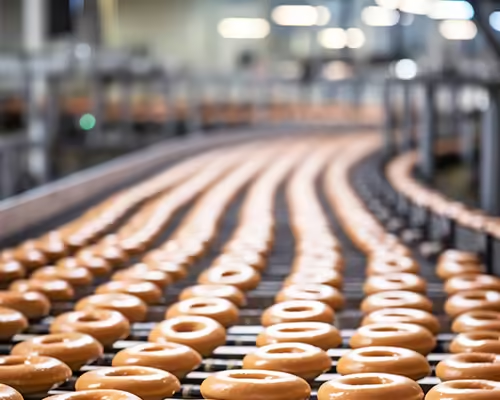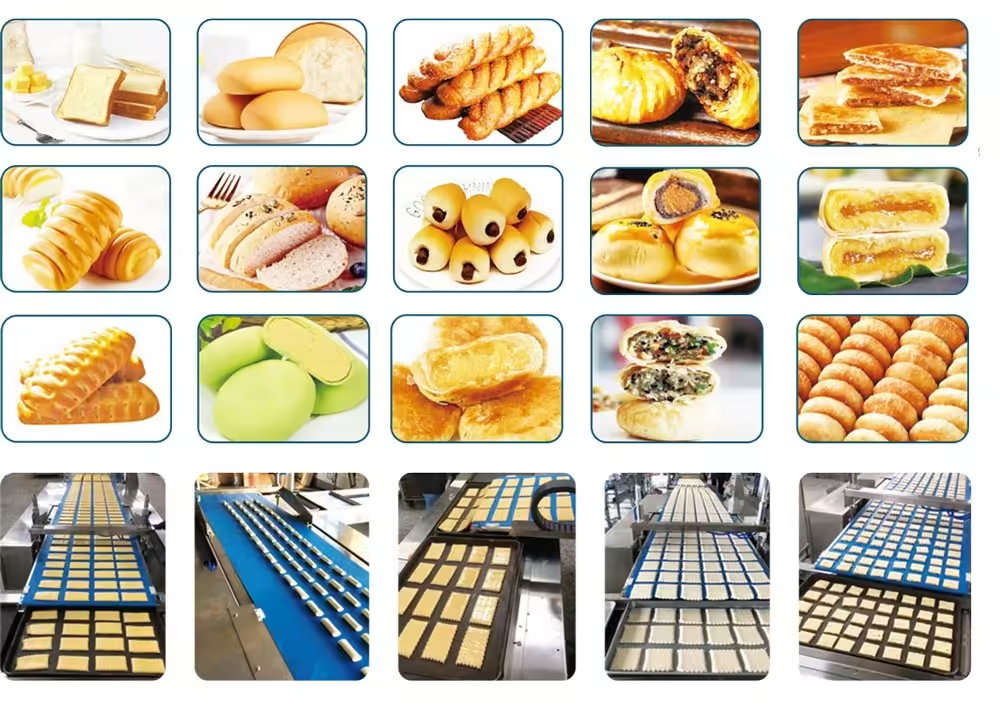


iscover how a connected bread bun production line powered by Industry 4.0 boosts efficiency, quality, and flexibility for modern baking operations.

Today’s food manufacturing demands efficiency and innovation, making the bread bun production line a key focus. Thanks to Industry 4.0, these lines are now connected and intelligent, optimizing every step from raw materials to packaging. Staying competitive means understanding this crucial shift in baking.
This blog will explore how smart, automated bread bun production lines are revolutionizing the industry. We’ll dive into current trends, common challenges in baking production, and how cutting-edge technology and custom solutions can address these pain points.
The baking industry is embracing the wave of Industry 4.0—connected devices, data analytics, and automation—all geared toward smarter manufacturing. The bread bun production line is no exception, evolving toward systems that are:
These trends reflect a growing demand for production lines that not only produce consistent quality but also adapt quickly to market changes, regulatory requirements, and consumer preferences. The future lies in connected baking—where every machine communicates seamlessly within the production network.
As you consider upgrading or installing a bread bun production line, certain challenges are likely top of mind:
These pain points are universal and require solutions that go beyond simple mechanization. Smart automation and data-driven decision-making tools integrated within your production line can address these challenges head-on, optimizing your bakery operations.
The latest bread bun production lines are powered by advanced engineering and software solutions, providing several key benefits:
Below is a comparison table illustrating typical features found in modern bread bun production lines, highlighting automation levels and customization options.
| Feature | Basic Production Line | Semi-Automated Line | Fully Connected Bread Bun Production Line |
|---|---|---|---|
| Automation Level | Low | Medium | High |
| Production Capacity | Up to 1000 buns/hour | 1000–5000 buns/hour | 5000+ buns/hour |
| Flexibility | Limited | Moderate | High |
| Real-Time Monitoring | No | Partial | Full |
| Energy Efficiency | Standard | Improved | Optimized with Smart Controls |
| Maintenance Approach | Reactive | Scheduled | Predictive |
| Customization Possibility | Minimal | Moderate | Extensive |
By embracing a connected production line, you can:
This smart approach not only addresses your immediate challenges but also future-proofs your operation, making it ready for emerging trends and evolving consumer needs.
The connected bread bun production line represents a paradigm shift—moving from traditional mechanized baking toward a fully integrated, intelligent manufacturing ecosystem. This transformation is essential for any bakery or food processing company aiming to maintain competitive advantage through improved efficiency, quality, and flexibility.
Investing in a smart bread bun production line goes beyond just upgrading equipment—it’s about adopting Industry 4.0 principles to achieve a more efficient, flexible, and sustainable baking operation.
Now is the perfect time to step into the future of smart baking. Seize the opportunity to upgrade your production line, boost your competitiveness, and unlock a new era of efficiency and profitability!
What is an Industry 4.0 bread bun production line?
An Industry 4.0 bread bun production line incorporates automation, IoT connectivity, real-time data monitoring, and smart controls to optimize every step of bread bun manufacturing.
How does automation improve bread bun production efficiency?
Automation reduces manual labor, speeds up processes like dough dividing and baking, and ensures consistent product quality, leading to higher throughput and less waste.
Can I customize the production line for different bread bun types?
Yes, modular designs allow easy adjustments to equipment and process parameters for various product specifications and recipes.
What maintenance approach is best for modern bread bun production lines?
Predictive maintenance, powered by real-time data monitoring, helps prevent breakdowns before they occur, saving time and costs.
What maintenance is required for a bread bun production line?
Regular cleaning, component checks, lubrication, and software updates are essential. Predictive maintenance tools included in Industry 4.0 lines can alert you before potential failures occur.

